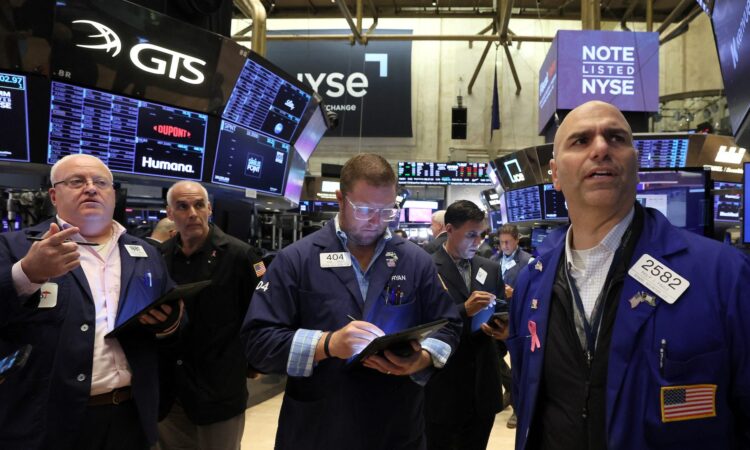
This is AI generated summarization, which may have errors. For context, always refer to the full article.
The Dow Jones Industrial Average falls 1.02%, the S&P 500 drops 1.16%, and the Nasdaq Composite sheds 1.14% in value on Tuesday, August 15
WASHINGTON, USA – US stocks fell and oil slid over 1% on Tuesday, August 15, as investors renewed fresh concerns over whether the Federal Reserve was done hiking interest rates and the resilience of China’s economy.
All three major US equity indexes ended the trading day lower, after a stronger-than-expected report on US retail sales data. The US Department of Commerce reported that US retail sales had increased by 0.7% in July, ahead of the 0.4% boost economists had anticipated, leading investors to wonder if the Fed may have longer to go on its rate-hiking campaign to tame inflation.
The Dow Jones Industrial Average fell 1.02%. The S&P 500 dropped 1.16% and the Nasdaq Composite shed 1.14% in value.
The MSCI world equity index, which tracks shares in 45 nations, was last down 1%.
“Given the fact that we are so hyper-vigilant about the Fed and what their next step will be in September, it isn’t surprising that the market reacted with jitters, given that the retail sales number might indicate that the Fed would continue to raise rates,” said Peter Anderson, founder of Andersen Capital Management in Boston.
However, others argued the single surprise in economic data is likely not enough to fundamentally change Fed thinking.
“Yields on both 2-year and 10-year treasuries moved a bit following the report but the sales data do not support any material change in expectations for the next Fed meeting,” said Jeffrey Roach, chief economist for LPL Financial.
US 10-year Treasury yields briefly hit 10-month highs, reaching as much as 4.274% earlier in the day before dipping back to 4.217% later.
Elsewhere, concerns about the strength of China’s economy weighed on oil markets, where crude dipped by as much as 2% on sluggish economic data from the country and concerns Beijing’s surprise rate cuts were insufficient.
Brent crude settled down 1.48% at $84.93 a barrel, while US crude fell 1.84% at $80.99 per barrel.
Cuts to China’s one-year loans to financial institutions, at 15 basis points, were the largest since the outset of the COVID pandemic. Industrial output and retail sales growth both slowed from a month earlier to a year-on-year pace of 3.7% and 2.5% respectively, missing expectations.
Russia’s central bank, meanwhile, hiked its key interest rate by 350 basis points to 12%, an emergency move to try to halt the rouble’s recent slide after a public call from the Kremlin for tighter monetary policy.
The rouble pared gains after the decision to stand 0.6% weaker at 97.09, but still significantly above lows near 102 on Monday, August 14, which had not been hit since the early weeks of Russia’s war in Ukraine.
Emerging markets remained in focus a day after Argentina devalued its currency by nearly 18%.
The dollar index, which tracks the greenback versus a basket of six currencies, was roughly flat, up 0.03% to 103.222. – Rappler.com



